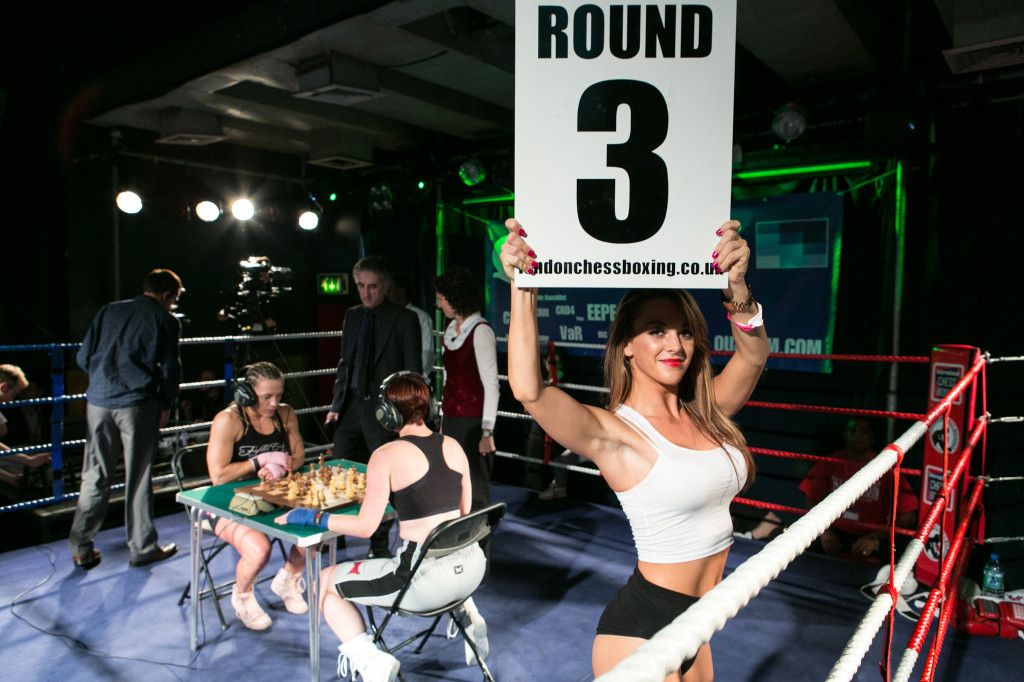Ultimate strategy sport, or boxing with breaks?
By Natalie Serafini, Assistant Editor
It’s been 20 years since Wu-Tang Clan sang about “Da Mystery of Chessboxin’,” and the activity remains a mystery. A mash-up, as the name suggests, the game takes the brawny strategies of boxing and mixes in the intellectual mind games of chess. With the intriguing weave of classical game and classic can o’ whoop-ass, chess-boxing begs for an apt label.
In the game, one match is comprised of alternating six rounds of chess—each round four minutes in length—and five rounds of boxing—three minutes each. There’s also a brief amount of time between each mental/physical switch to suit up and change gear.
Already we’re encountering some stiff regulation that makes for a challenging sport—or schmort. The opponents only have 12 minutes to complete all their chess moves. To give you an idea of how limiting that can be, set it against the longest recorded chess competition: Belgrade 1989, Ivan Nicolic versus Goran Arsovic, which ended in a draw at 269 moves after more than 20 hours.
The mind-meld of switching strategies can’t help matters much, either. Alternating between creating and attacking points of vulnerability in your opponent, to creating and attacking points of vulnerability in your opponent can be… okay, maybe they’re pretty similar in that regard. But while there is a strategy to boxing, the game can sometimes come down to strength, endurance, and who trained harder; chess requires always being a few moves ahead of your challenger.
The game is intense, compounding one physically arduous activity with a mentally arduous one. On top of that, there are several ways to end up in the loser’s circle. A knockout in boxing, or a checkmate or an opponent’s running out of time in chess, or a forfeit in either category means the end of the game.
An interviewee in Bobby Fischer Against the World is quoted as saying that “Fischer is to chess what Ali is to boxing”—yet for all his chess prowess, Fischer might not have fared so well in the ring against current heavyweight chess-boxing champion, Nikolay “The Chairman” Sazhin. You also can’t depend on being fantastic at boxing to make up for being mediocre in chess, as competitors who are in fighting shape must have at least a Class A strength in chess.
Obviously the game is challenging, but it doesn’t fit smoothly into the definition of a sport. Yes, sports require skill—both physical and strategic—but taking a well-respected sport and tacking on a game of strategy doesn’t necessarily make for a new hybrid sport. Taking a breather from the brute battery of boxing to sit and move pieces around a checkered board doesn’t strike me as the most strenuous activity.
That’s just what I see chess-boxing as, to be perfectly frank: an activity. It’s an interesting activity; I’d probably pause in flipping channels to watch it, and I applaud the introduction of something more intellectual to an otherwise brain-beatin’ sport. Nevertheless, I don’t see gym classes and chess clubs joining forces anytime soon. If you’re good at chess, you’re good at chess. If you’re good at boxing, you’re good at boxing. Let’s not go bastardizing two such separately respectable pursuits with a feeble hybrid.
Verdict: schmort.

